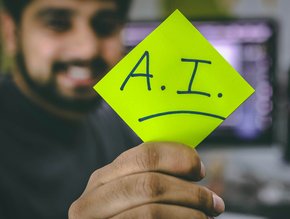Procurement 2023: 3 Ways Automation Will Drive B2B Commerce

Over the past few years, transformation has been a key corporate buzzword - and for good reason. The business landscape has evolved significantly, and ongoing events such as COVID-19, international supply chain disruptions and worker shortages have all challenged B2B companies to quickly adapt their strategies.
Heading into 2023, businesses are seeking solutions to build resilience and gain momentum. For procurement leaders, intelligent purchasing solutions are top of the list. Best-in-class organizations are implementing technologies that streamline and automate purchasing while providing more control over procurement processes.
This shift toward more digital purchasing solutions is impacting the way B2B buyers and suppliers transact. Here are three ways procurement automation will influence purchasing, technology and partnership decisions through 2023 and beyond:
1. eProcurement Integration Delivers Real-Time Data and Streamlined Purchasing
In light of ongoing supply chain disruptions, it is absolutely essential for procurement teams to have real-time visibility into pricing and product availability. Inventory levels are changing rapidly and products quickly go in and out of stock, making it all the more important for teams to make fast purchasing decisions with the most up-to-date information available.
Solutions such as PunchOut catalogs enable purchasing teams to access and browse dynamic catalogs directly within their eProcurement solutions. Even better, buyers can automatically and seamlessly transfer cart data back into their procurement solution - allowing them to streamline the internal approval process and maintain proper purchasing compliance while quickly procuring the products they need.
2. Three-Way Matching Eliminates Manual Effort in Invoice Reconciliation
Invoice reconciliation is a tedious but necessary step in the purchasing process. Historically, companies were required to manually review and match purchase orders, invoices and goods receipt line-by-line. Not only was this time and resource-intensive, but the manual nature of this process was also highly prone to error, which can then lead to processing delays and late payments.
Automated three-way matching significantly reduces the time, effort and error-rate associated with invoice reconciliation. This process, which combines PO Automation, Invoice Automation and Advanced Shipping Notification, expedites data matching by ensuring the data transferred between buyer and supplier systems is automated, in sync and clean. By accelerating invoice reconciliation, buyers can issue payment quicker, improve supplier relationships and earn better terms and prices.
3. Partnering With a Third Party Accelerates Supplier Onboarding
Procurement teams always want to derive more value from their eProcurement investment, and supplier integration plays a key role in that. However, onboarding suppliers to eProcurement solutions can be technically complex and time consuming.
Buyers are increasingly partnering with procurement integration specialists to achieve quick and efficient supplier onboarding. Outsourcing to a third party gives buyers all the benefits of integrated B2B commerce without consuming internal resources. In addition to helping buyers connect their suppliers to their eProcurement solution, partners like TradeCentric also host and maintain the integration infrastructure for long-term success and scalability.
In an increasingly complex and digital B2B commerce landscape, buyers continue to seek ways to integrate and automate key aspects of the transaction process as they aim to drive efficiency and resilience for the business.






